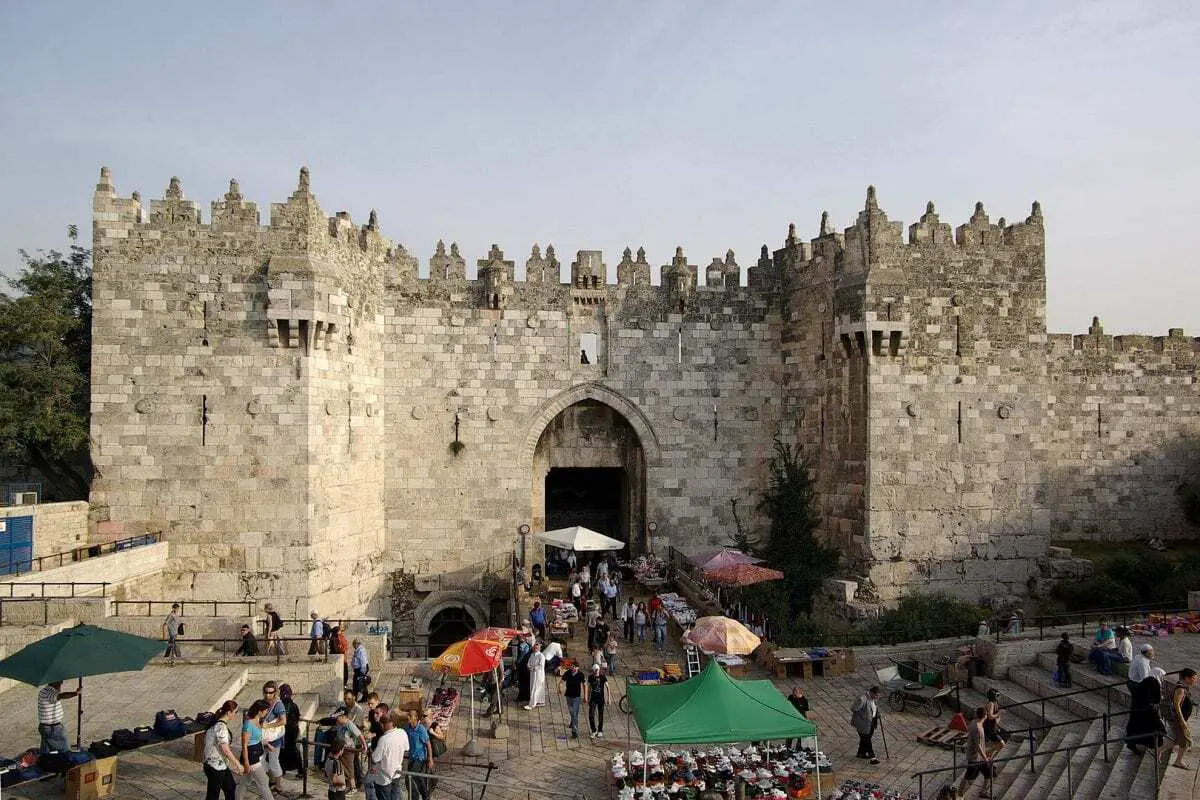For hundreds of years, when visitors arrived in Jerusalem and entered the city by way of Damascus Gate – the largest and most magnificent of Jerusalem’s gates – they glanced up and saw the large ‘crown’ that the sultan Suleiman the Magnificent built atop the gate in 1538 CE. Now they can enjoy that sight again!
But in 1967 the gate sustained serious damage and the crown was destroyed during the fighting in the Six Day War. Now, the Jerusalem Development Authority, in cooperation with the Israel Antiquities Authority and with funding provided by the Prime Minister’s Office, is concluding a comprehensive project of rehabilitating Damascus Gate, during which the gate was cleaned of the effects from the ravages of time and its ornamentation was restored, including the magnificent ‘crown’ at the top of the gate.
When workers of the Conservation Department of the Israel Antiquities Authority went about restoring the decorations on Damascus Gate they were aided by pictures of the gate that were taken at the beginning of the twentieth century when the British governed Jerusalem.
The pictures show the gate in all its glory, with the crown at the top of the center embrasure, and based on this the conservators proceeded with their work. As part of the engineering and stabilizing measures performed, the ‘crown’ was secured to the core of the wall by means of eleven anchors. At the same time the decoration’s four stones were completely restored, and its ceiling was covered again with stone slabs as it was in the past, based on the historical photographs.
“The Old City of Jerusalem is a focus of interest for people the world over and the number one tourist attraction in Israel”, says the Elʽad Kendel, director of the Old City Basin in the Jerusalem Development Authority, “the city walls and the gates are the first thing that everyone sees when they arrive at the Old City, and it is therefore important to us that tourists, both domestic and foreign, see the city in all its glory”.
According to Avi Mashiah, the project’s architect on behalf of the Conservation Department of the Israel Antiquities Authority, “The work at Damascus Gate was particularly challenging since it is located at the entrance to a noisy and bustling marketplace. All of the work that was carried out there was done so in agreement with the local merchants. In order to avoid disturbing business in the marketplace, work was begun after the last stall closed at 10:00 PM, and continued until the early hours of the morning, prior to the start of the following business day.
Because of its beauty, Damascus Gate is also the most documented of Jerusalem’s city gates and its historical material and numerous photographs facilitated an accurate restoration of its appearance. Every single decoration, including all of its features, was studied and restored by us down to the smallest detail, in order to provide visitors to the gate as full and complete an experience as possible”.
Four years ago the Jerusalem Development Authority commenced work on the rehabilitation and conservation of the Old City walls in Jerusalem, in cooperation with the Conservation Department of the Israel Antiquities Authority, which is actually carrying out the work on the walls, and with funding provided by the Prime Minister’s Office.
As part of the project, work was conducted along the entire length of the Old City walls and on the gates from the Dung Gate, clockwise in the direction of Zion Gate, Jaffa Gate, the New Gate and Damascus Gate. Work on the wall is currently being done at the northeastern corner of the Old City and is scheduled to be completed by year’s end.
The work on the wall included conservation, the removal of hazards and the rehabilitation of elements in the wall. In addition a laser scan was used for the purpose of precisely measuring the wall, particularly the gates, which were surveyed and studied at the level of individual stones. The Jerusalem Development Authority and the Israel Antiquities Authority are pleased that visitors to the Damascus Gate can now enjoy the full splendor of the structure, and experience it exactly as the public has for 460 years, until the gate was damaged in 1967.
IAA
Header Image Credit : Berthold Werner







